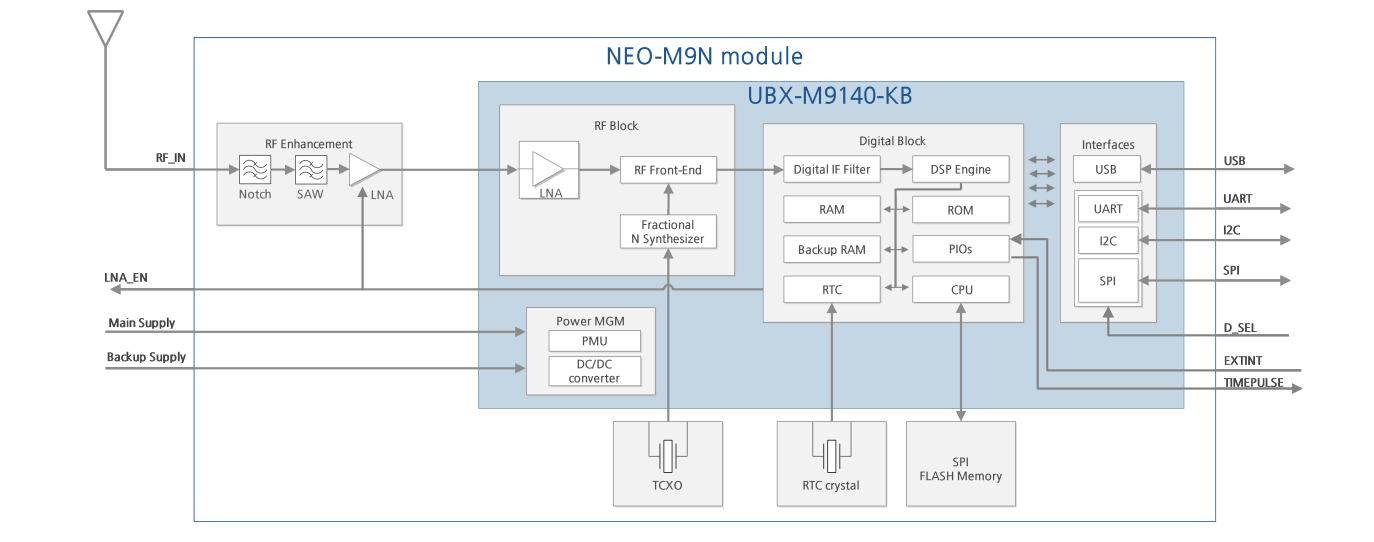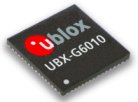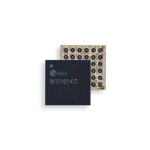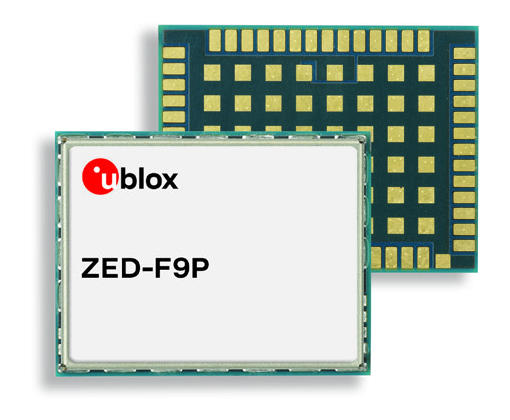u‑blox released the NEO‑M9N, the first module based on the company’s new robust meter‑level M9 global positioning technology platform, designed for demanding automotive, telematics, and UAV applications. Containing a high-performance GNSS chip, the UBX‑M9140, the platform can receive signals from up to four GNSS constellations (GPS, GLONASS, BeiDou, and Galileo) concurrently, to achieve high positional accuracy in difficult conditions such as deep urban canyons. It provides a position update rate of up to 25 Hz, enabling dynamic applications like UAVs to receive position information with low latency.
The u‑blox M9 platform filters against RF interference and jamming, spoofing detection, with advanced detection algorithms that enable it to report fraudulent attacks quickly so that users’ systems can react to them in a timely fashion. A surface acoustic wave (SAW) filter combined with a low-noise amplifier (LNA) in the RF path is integrated in the NEO‑M9N module. This setup guarantees normal operations even under strong RF interference, for example when a cellular modem is co‑located with the NEO‑M9N.
Developers can design a single PCB and then migrate to a different positioning technology, such as dead-reckoning augmented GNSS technology, with little change to the board design.
u‑blox has released the Explorer Kit M9 (XPLR‑M9), a development board for designers to assess the technology. The miniature plug‑and‑play device has u‑start software with a number of preset scenarios to enable exploration of the performance of the new device.
The u‑blox M9 technology platform complies with the ISO/TS 16949, ISO 16750, AEC‑Q100 standards. Engineering samples of the NEO‑M9N, the UBX‑M9140 chip and the Explorer Kit are available now.






